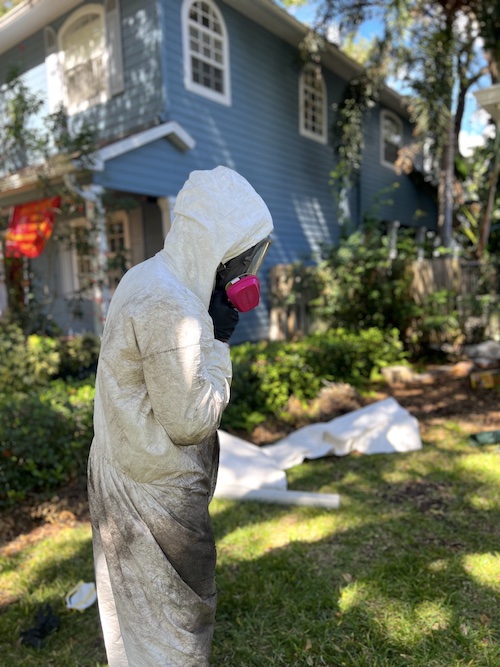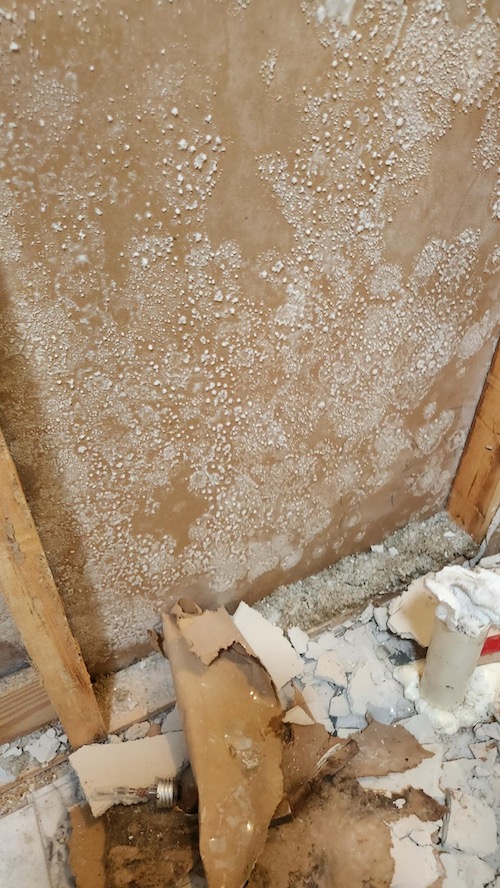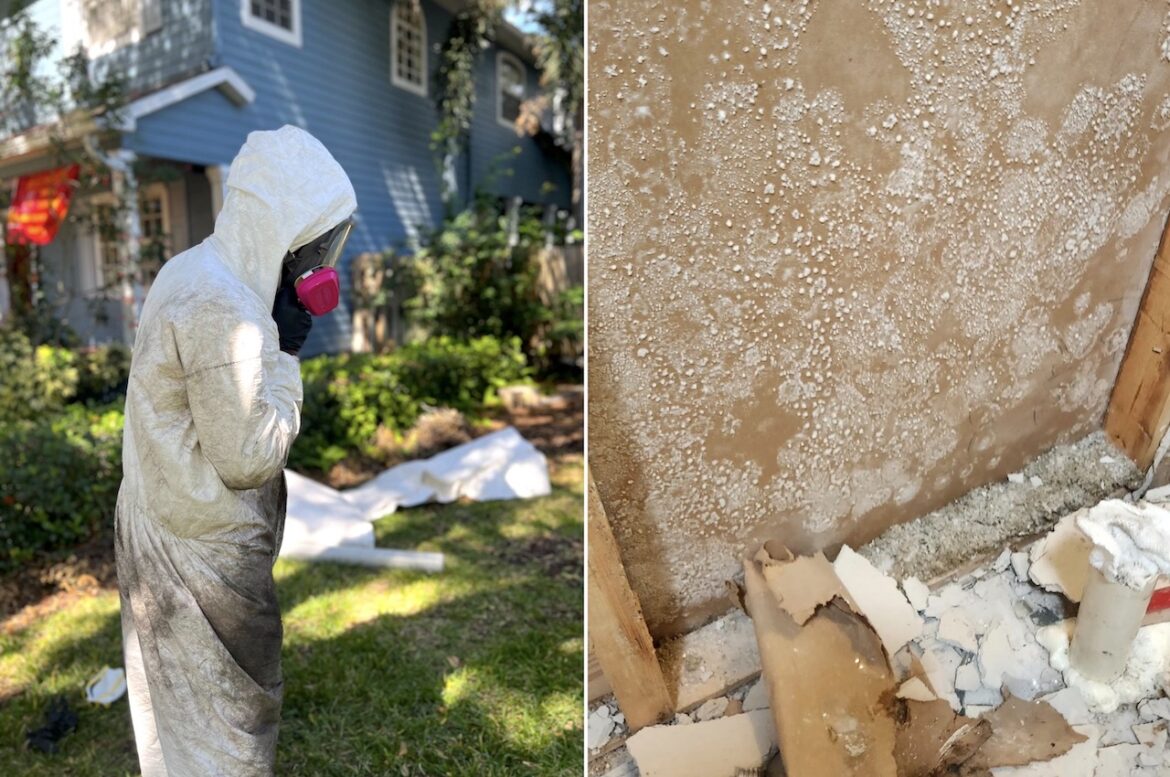Mold Removal or Mold Remediation: What’s the Difference?
As you research your options of dealing with a mold problem, you’ll come across two terms over and over: Mold Removal, and Mold Remediation.
What are they? How are they different? Which one is right for you?
The first thing you should know is that the difference isn’t a case of right or wrong: It isn’t like mold removal is good and mold remediation is bad or vice versa.
Mold removal is good if it’s done when it’s needed, done properly, and done when actual mold remediation isn’t required.
Mold remediation is good if it’s done when it’s needed, done properly, and done when proper mold removal alone wouldn’t solve the problem.

This makes more sense if you look at it this way:
- Mold removal involves removing just the mold and microbial growth from a surface or room.
- Mold remediation involves removing not just the mold and microbial growth, but some or all of the surface or item itself.
To put it simply: Sometimes “all you need” is proper cleaning and removal of mold. Nothing else, you just need and want the mold removed from surfaces and the air in a room, followed by very extensive cleaning.
Other times—when mold has physically grown into and caused damage to some part of the home, well, some parts of the home have to be removed, along with all of the mold on them.
(Removing pieces of drywall, patches of carpet, carpet padding, and some floorboards or subflooring isn’t uncommon.)
Take drywall for example: You can remove mold or mildew from painted drywall by cleaning it properly, or you can remove an entire piece of drywall, cut off from the wall or ceiling.
Both are proper ways to deal with mold. As long as they’re both used properly.
Think of Mold Removal and Mold Remediation like Botox versus a Facelift: Both are great. Both have their benefits. But if you did either one when you actually needed the other, you’re not going to be happy (or healthy, in the case of mold.)
Mold removal can be “bad” if it’s done when something more extensive (mold remediation) is actually required.
Mold remediation can also be “bad” if it’s done when it’s not actually needed—whether because your mold professional doesn’t know better, or wants to change more, or for some other reason.
A Tale of Two Mold Problems
Imagine you returned home to Florida from a vacation you went on. You left your AC’s fan in “On” mode rather than “Auto,” and your clothes, belongings and walls are now covered in a mold bloom.
Well, the handling for that disastrous situation probably doesn’t involve tearing out drywall—assuming you caught the problem early enough. So, “only” mold removal is needed. It’s not a short or simple process, but it doesn’t require tearing out walls and flooring.
But here’s a twist on that same scenario:
Let’s say you went on vacation and returned to a leaking air conditioner.

Water is puddled on the ground, and you have the same mold bloom (or you don’t, either way, we still have a leak, wet flooring and subflooring, and an unknown number of gallons of water that aren’t where they should ever be.)
That’s a mold problem that will keep on giving for a long, long time.
Unless actual mold remediation is done.
Flooring will have to be removed, and wet building material will be thrown away and replaced (rebuilt), or thoroughly and completely dried out.
To only do mold removal in that case would be a big mistake.
Because mold removal does not involve fixing leaks and removing wet building material—both of which are definitely required in our scenario here.
So Which Do I Need….?
So, which do you need? Mold removal, or mold remediation?
That’s difficult to say but hopefully the above has been helpful in pointing you in the right direction.
In our first scenario (mold only, no leaks or puddles of water) you probably only need mold removal.
In our second scenario (mold, a leaking A/C, and gallons of water unaccounted for), you need mold remediation.
And it would be a big mistake to switch the handlings for these two scenarios.
But, some mold remediators—whether because they don’t know better, or want to overcharge—might suggest that either less or more of a handling is needed.
Of course, this is a tricky scenario overall, because if you have conflicting opinions from two different professionals, or two price quotes that ask for very different amounts of money, it’s hard to tell whether one of them is cutting corners, or if one is overcharging.
That’s why our Free Environmental Consultation is so helpful to Florida homeowners.
We’ll come out to your home, take readings with a number of meters and cameras that help us see inside of and behind walls, and get a reading on the moisture content of the affected area, and we’ll get to the bottom of the problem.
We’ll help you determine whether you need mold remediation, or if mold removal alone might be sufficient.
Mold Removal Can Be Part of Mold Remediation
Lastly, you should know that mold removal can also be done as part of a larger mold remediation job.
For instance, we might have to physically remove some very soaked and moldy pieces of drywall, but not have to physically remove ducting or other glass, plastic or metal items, since mold can be cleaned off of those.
The key determining factor is whether the roots of mold can grow into the surface or not.
These roots are called hyphae and they can grow into carpet, wood, walls, ceiling tiles and more. But they can’t grow into plastic, metal, or glass.
The ultimate and final answer as to whether you need mold removal or mold remediation depends on an inspection and on an understanding of what caused the mold growth.
Mold remediation should also always involve finding and fixing the source of the water or moisture that caused the mold to grow in the first place.
For a Free Environmental Consultation, call Mold Solutions at (727) 276-4787.







